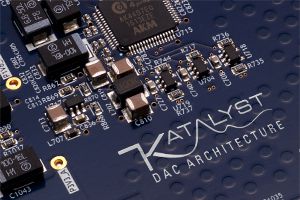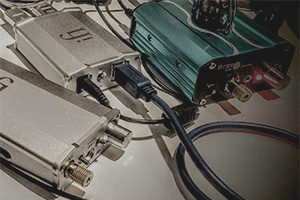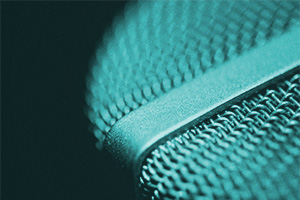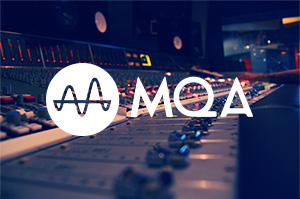Perfect Sound Forever?
CD promised “perfect sound forever”, but of course it didn’t deliver that. It delivered the best that technology could manage at the time, which was 44.1KHz sampling at 16 bits. That means if you buy a CD recorded in the last decade or so, you’re listening to a massively reduced version of the original: today’s studios wouldn’t dare record in anything less than 192KHz, 24-bit quality. Listening to that on CD is rather like listening to a concert from the foyer.
There’s another problem with CD too, and that’s its dynamic range. CD’s range is from roughly 20Hz to 20KHz, which is where the normal range of human hearing lives. But sounds produced by musical instruments extend above 50KHz, and filtering them out introduces distortion in the audible frequency range. In practice, the sound at the lowest and highest ends is often poorly reproduced. And that’s before the rest of the CD player starts messing with things. Spinning those discs creates electromagnetic fields and the laser introduces its own harmonics, both of which affect the sound.
Perfect sound forever? More like perfect sound never.
And we did try. In fact, we made one of the best CD players of all time.
But CDs aren’t even fun to browse. By zapping albums with a shrink ray that took them from 12 inches to 12 centimetres, record companies took all the fun out of record sleeves. Nobody’s framing jewel cases as works of art. Even if they haven’t lost or broken them.
Wouldn’t it be great if there was a way to get the convenience of CD with the sound quality of the modern recording studio?
You’ll never guess where I’m going with this.
Why it’s time to kick CD to the kerb
There are two kinds of digital music. There’s poor quality, this-will-do digital music, and there’s extraordinary, I-never-imagined-technology-could-do-this digital music. CD has fallen into the former camp while our digital streaming has embraced the latter.
With digital streaming, there are no moving parts in the player to introduce imperfections, so even music taken from CD sounds better (and transferring your existing library couldn’t be simpler; we’ll show you how). Streaming makes browsing fun again, with artwork rendered in all its glory and instant access to anything in your collection. With digital streaming, you can hear 24-bit, 192KHz studio master recordings as they sounded in the studio. With Streaming you can hook into services such as Tidal or Spotify to discover new music. And with digital streaming you can make your hi-fi system the hub for your entire home’s entertainment, delivering high performance audio to every room in the house.
The Linn DS family of streaming Network Music Players does all of that and more. And it has something that CD definitely hasn’t: a bright future.
We’ve always prided ourselves on our forward-thinking, future-proofing approach, and that’s in every Linn DS: when technology enables us to do things better or introduce new features, we can deliver that to all of our customers. For example, the iPad didn’t exist when we introduced the first Linn DS player in 2007. But when we launched a simple, intuitive iPad app a few years later, we made it available to every single Linn DS owner. For free.
All Linn DS players feature our incredible Space Optimisation technology, which tunes your system to the acoustics of your room, and optimises performance regardless of speaker positioning: that was a free upgrade for all Linn DS players in 2015.
Like our systems, we’re with you for the long term.
Fall in love with your music all over again
The single best feature of the Linn DS isn’t its sound quality, or its upgradeability, or its home entertainment connectivity, or its ability to become the heart of a multi-room audio extravaganza. It’s that it makes you fall in love with music all over again. It brings back serendipity, where gems you haven’t heard for years remind you of why you loved them so much, and deep cuts are all the more delightful for appearing unexpectedly.
We feel sad about CD. We really do. But digital streaming delivers better sound, more possibilities and more convenience than CD ever did, and as technology gets smarter it’s only going to get better. The CD is a steam engine in a world of electric cars, a good-enough technology that just isn’t good enough any more.



